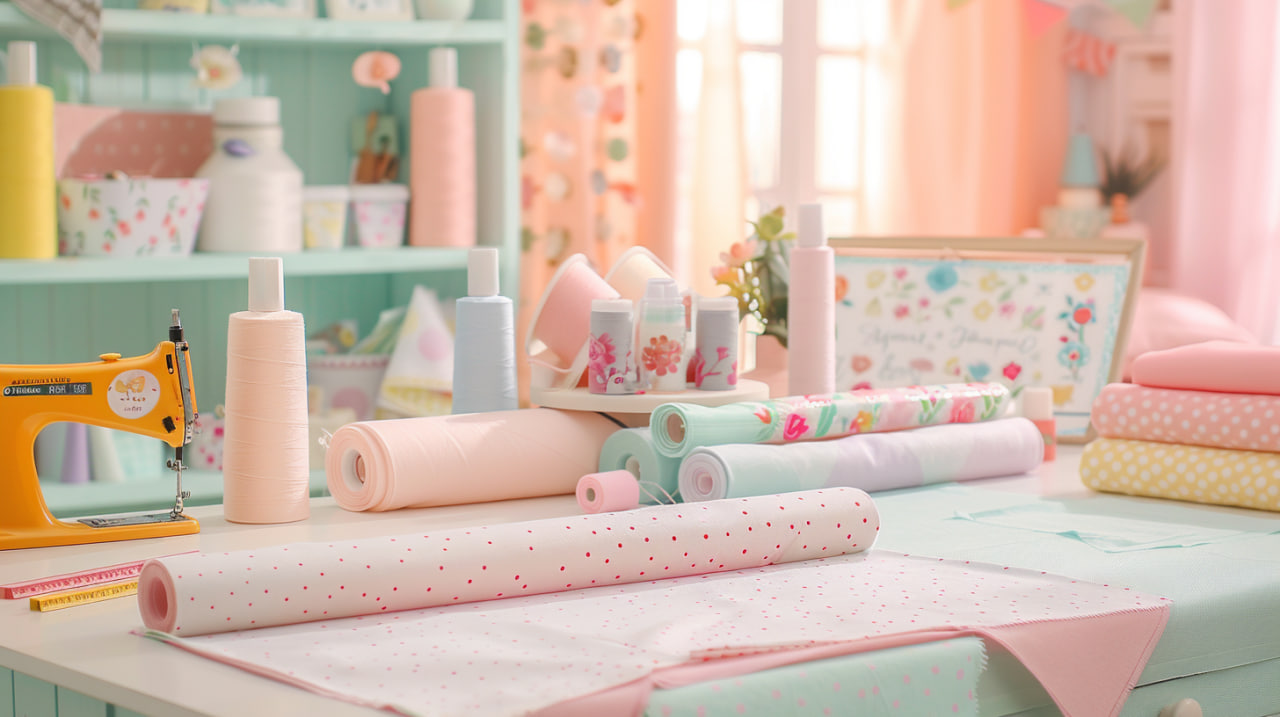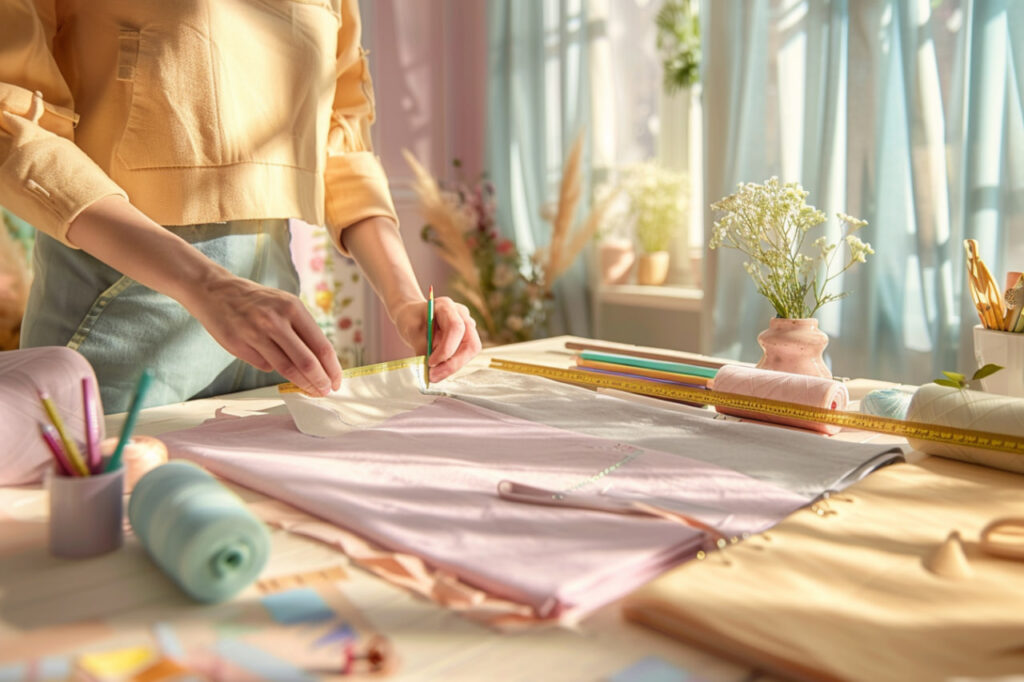Preparing Fabric for Cutting
Before laying out your pattern pieces, prepare your fabric properly. This includes:
✔ Pre-washing and drying your fabric as you would the finished garment. Shrinkage after cutting will throw your sizing and grain off.
✔ Pressing with an iron to remove any folds or creases that can distort layout accuracy.
✔ Squaring up the fabric, especially if the fabric came off the bolt askew. Gently tug opposite corners and press flat, aligning the selvages evenly. To check if your fabric is on grain, fold it so the selvages meet and hold it up—if the fold hangs smoothly and the edges align without ripples or pulling, you’re in good shape.
Laying Out the Pattern: Slow Down to Speed Up
Your pattern layout is more than just a suggestion—it’s your blueprint for success.
Tips for accurate layout:
Use the layout guide provided. It’s designed to minimize fabric waste and maximize grain accuracy.
✔ Use the layout guide provided. It’s designed to minimize fabric waste and maximize grain accuracy.
✔ Align the grainline arrow on each pattern piece with the lengthwise grain. Use a ruler or measuring tape to measure from each end of the arrow to the selvage—both ends must be equal.
✔ Cut on a flat surface, and avoid letting fabric hang over the table edge—it can distort the grain.
✔ Pin or weigh down pattern pieces securely to prevent shifting.
Don’t be tempted to cheat the layout just to save fabric—cutting a bodice piece sideways to fit a scrap may seem harmless, but it can completely change the fit and feel of the finished garment.
Cutting with Confidence
Once you’ve double-checked your layout, it’s time to cut.
✔ Use sharp fabric scissors or a rotary cutter for clean, accurate lines.
✔ Cut slowly and precisely, keeping your hand steady and following the pattern edge without lifting the fabric unnecessarily.
✔ For pattern-matching (like stripes or plaids), make sure your pieces are laid out in the same direction, and the motifs align at key seams. After cutting, label your pieces if needed—especially if you’re working on a multi-day project or with fabric that looks the same on both sides.
Final Thoughts: Precision Pays Off
Sewing may be creative, but cutting is where precision matters most. Laying out fabric correctly and cutting on grain sets the foundation for every stitch that follows. It ensures your garments not only look good on day one, but hold up over time. So take the time to measure that grainline, press your fabric flat, and double-check your layout. A few extra minutes at the beginning can save hours of fixing—or worse, starting over. Because in sewing, as in life, the best results come when you start on the right line.




